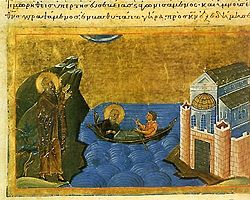Byzantinistik
 Das Fach Byzantinistik befasst sich mit der Geschichte, der Literatur und Sprache, der Religion sowie allen weiteren Aspekten der Kultur des Oströmischen (Byzantinischen) Reichs vom 4. bis zum 15. Jahrhundert. Das Fach ist also gleichzeitig historisch und sprach- und literaturwissenschaftlich orientiert. Das Oströmische Reich ging aus dem Zerfall des Römischen Reichs im späten 4. Jh. hervor und umfaßte in der Frühzeit den ganzen östlichen Mittelmeerraum, später vor allem Kleinasien, Griechenland, die Balkanhalbinsel sowie Teile Süditaliens. Sein politisches und kulturelles Zentrum war Konstantinopel, das antike Byzanz und heutige Istanbul.
Das Fach Byzantinistik befasst sich mit der Geschichte, der Literatur und Sprache, der Religion sowie allen weiteren Aspekten der Kultur des Oströmischen (Byzantinischen) Reichs vom 4. bis zum 15. Jahrhundert. Das Fach ist also gleichzeitig historisch und sprach- und literaturwissenschaftlich orientiert. Das Oströmische Reich ging aus dem Zerfall des Römischen Reichs im späten 4. Jh. hervor und umfaßte in der Frühzeit den ganzen östlichen Mittelmeerraum, später vor allem Kleinasien, Griechenland, die Balkanhalbinsel sowie Teile Süditaliens. Sein politisches und kulturelles Zentrum war Konstantinopel, das antike Byzanz und heutige Istanbul.
Daneben werden die Einflüsse des Oströmischen Reichs auf die mittelalterliche Staatenwelt in West- und Osteuropa und seine Wirkung auf die Nachwelt behandelt.
ENGLISH VERSION
Byzantine Studies
The field of Byzantine studies deals with the history, literature and language, religion, and other cultural aspects of the Byzantine Empire from the fourth to the fifteenth century. It is accordingly interdisciplinary, incorporating the methods of history, linguistics, and literary studies. The Byzantine Empire emerged from the collapse of the Roman Empire in the late fourth century and, in the early phase, included the entire Eastern Mediterranean region. Later it was limited to Asia Minor, Greece, the Balkan Peninsula, and parts of southern Italy. Its center—both politically and culturally—was Constantinople, today called Istanbul.
In addition, the field of Byzantine studies addresses the influence of the Byzantine Empire on the political geography of Europe and its repercussions for later developments.

